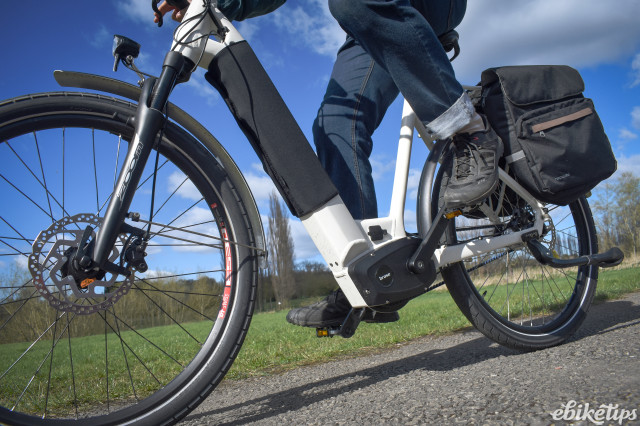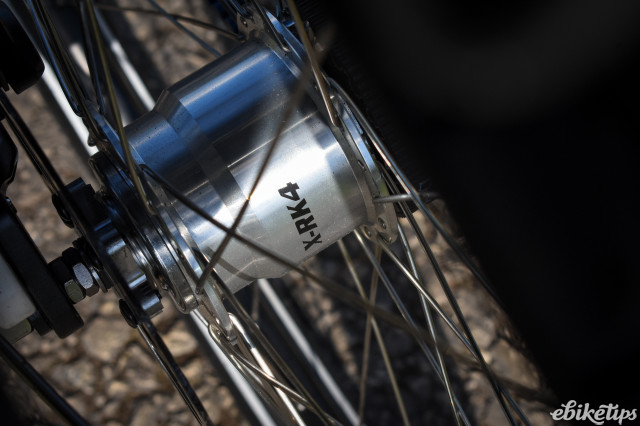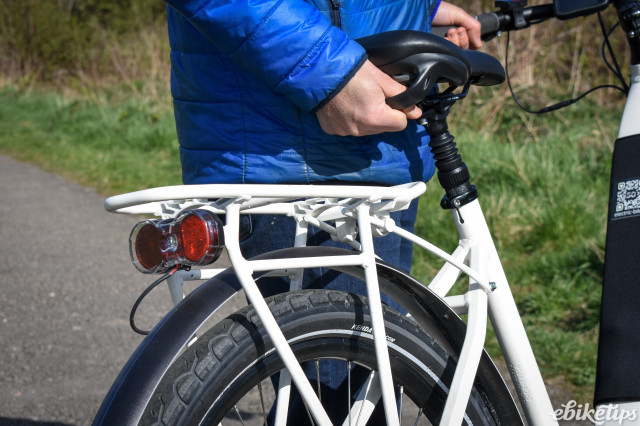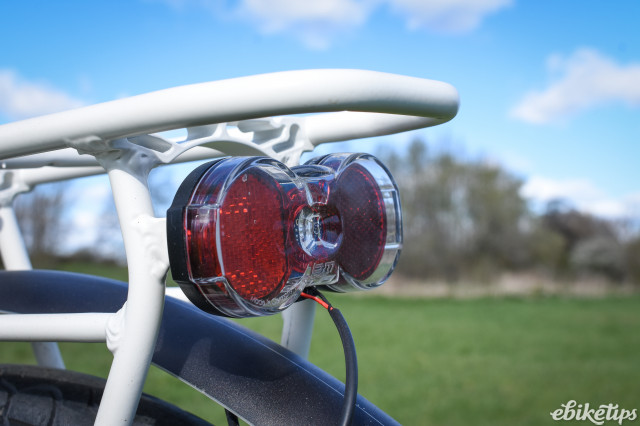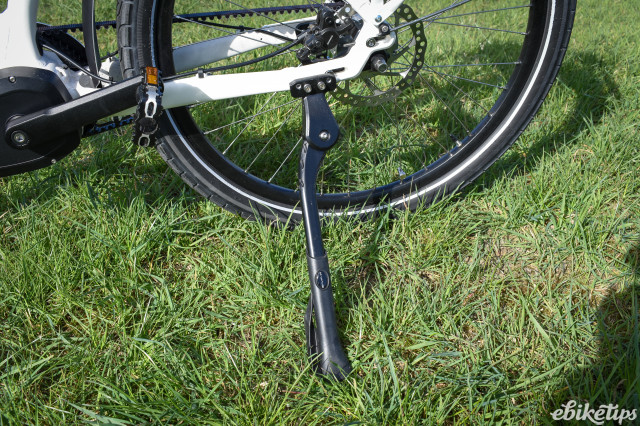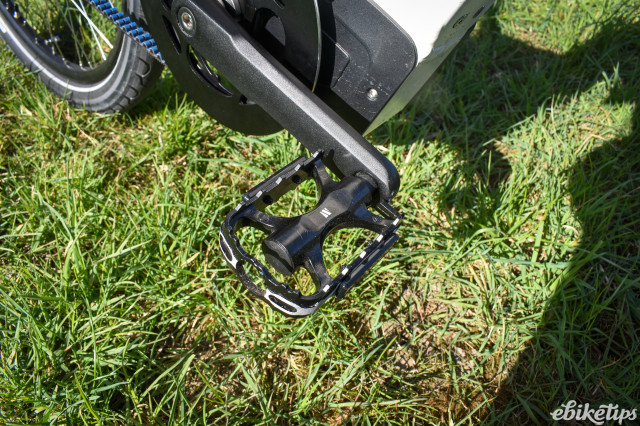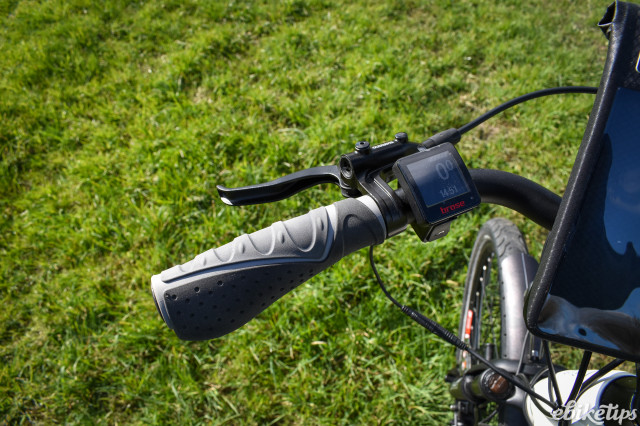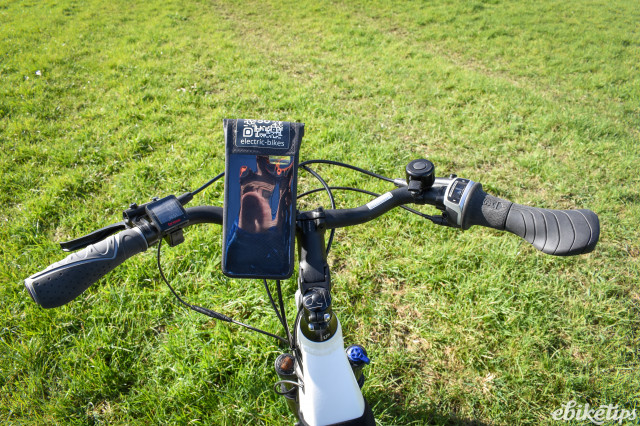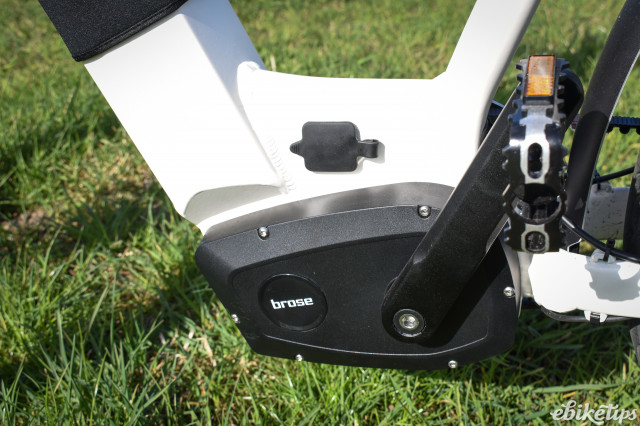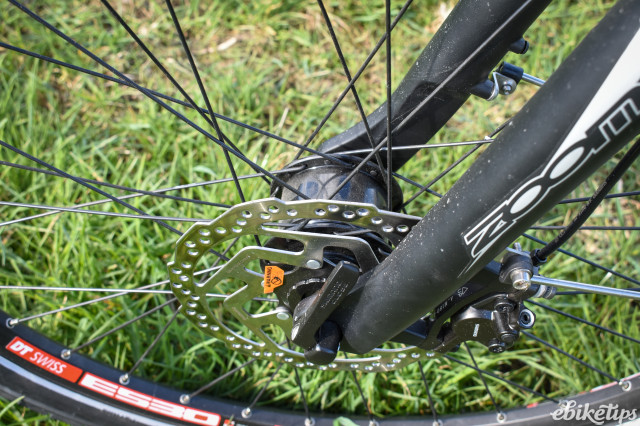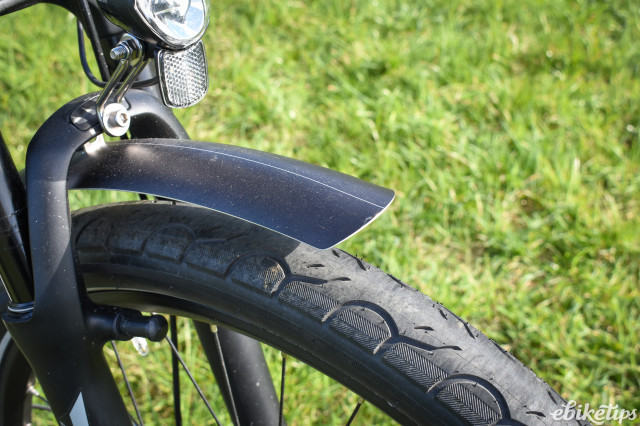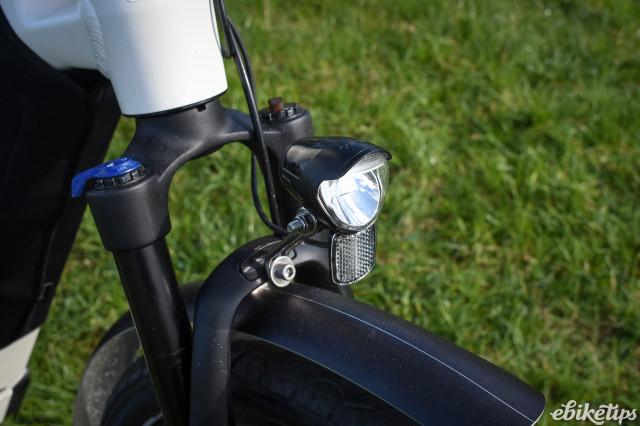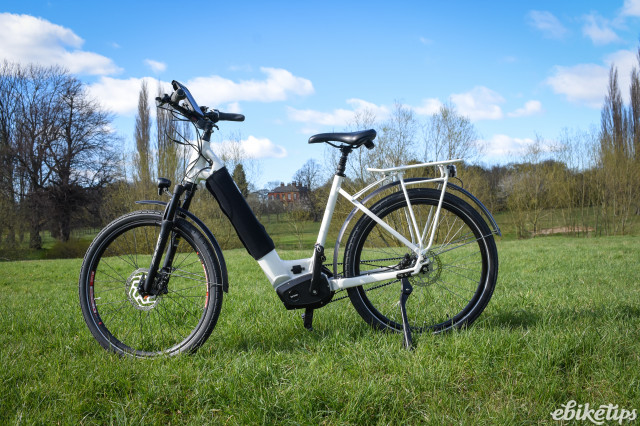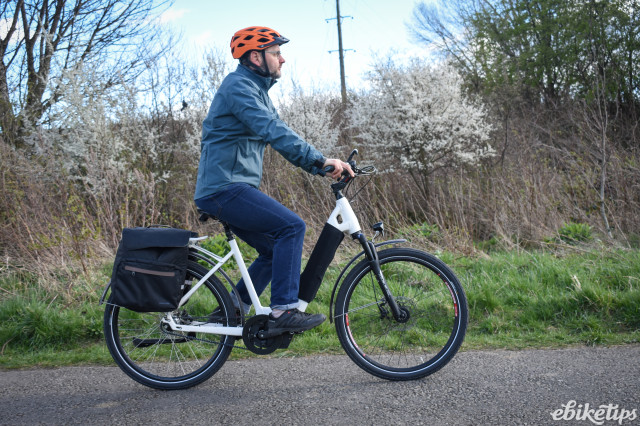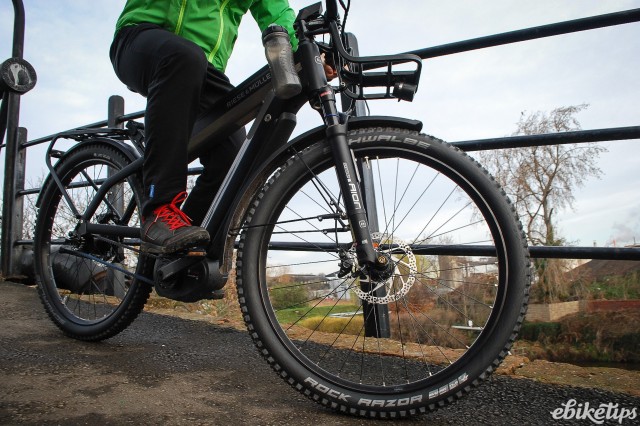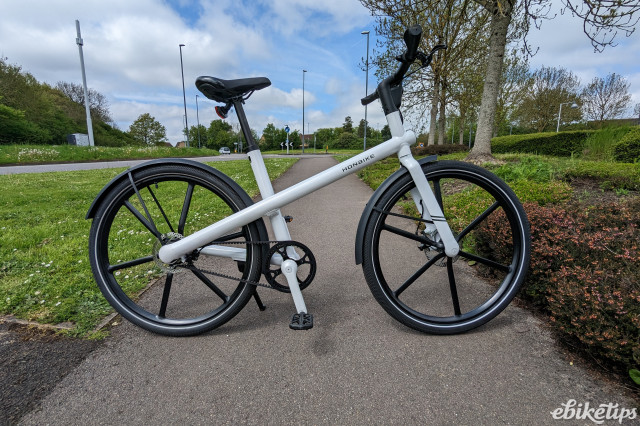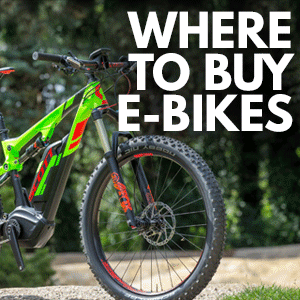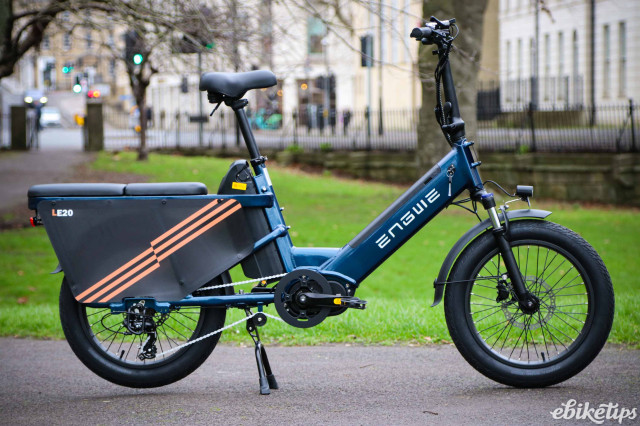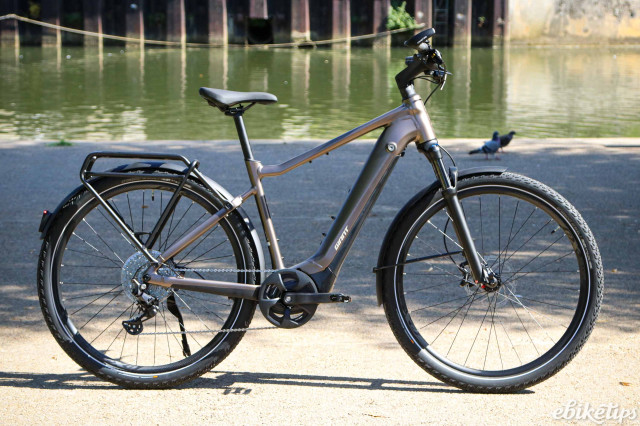50 Electric Bikes have just launched a new range of Brose-powered commuting e-bikes for 2021. Here we take a first look at the only belt drive in the range, the Citywave 4G.
These are bikes designed by and manufactured for 50 Electric Bikes of Loughborough and they have been able to put their own stamp on them, with the overriding design criteria clearly being a robust build, everyday practicality and low maintenance.
Our test bike, a hub-geared belt drive with step-thru frame, was a prototype and came without a lock on the battery door in the frame. We also had some problems indexing the Sturmey Archer 4-speed hub gears correctly, but 50 say these issues will be fixed on the production bikes.
Other bikes have already been launched and the range includes two bikes with the same frame as our Citywave 4G test bike: the Citywave 5G and the 11G both feature chain drives with the number of hub gears indicated in their names. There are also diamond frame Trekking branded models.
Brose motors are used across the range too. If you haven’t heard of Brose they are German auto part manufacturers, and in 2011 were ranked as the world’s fifth largest automotive supplier based largely on their specialism of regulators and electric drives for car windows and seat recliners. Their knowledge of gearing and electric drives made them a natural fit for e-bike drives.
Entering the e-bike mid-drive area in 2013 as one of the later competitors to Bosch, Shimano and Yamaha, they have in fact pioneered the use of quiet, internally belt-driven motors and of lightweight magnesium casings - the latter now adopted by other mid-drive manufacturers. They now have a range of four mid-drives all with very solid reputations and have worked to produce custom mid-drives for the likes of Specialized, so it is perhaps a little unfair they are not better known in the e-bike world.
50 Electric Bikes Citywave 4G - First Impressions
The first impression is of a hugely solid frame, the main frame housing a 540Wh battery. And it’s not just the frame that says solidity and longevity as there is a chunky pannier rack that overhangs the rear light to protect it from bashes, polycarbonate Curana mudguards, metal pedals and a very solid looking kickstand. Allied with the low maintenance belt drive, it all points to a bike that is designed to be long lasting and involve little maintenance. To keep things even simpler, the battery is in-frame and non-removable by the end user (though it can be removed for servicing or replacement). Some may like the simplicity and security and the fact you don’t have another key to lose whilst others may prefer to be able to remove the battery to bring it in overnight from a cold shed.
Brose’s T drive is quite large and heavy looking by modern standards but proved whisper quiet, smooth and powerful even at low cadences and even though there are more powerful torque rated mid-drives out there (including some other Brose models) it just feels powerful up the hills, even up steeper inclines, pushing the weight of quite a heavy bike without much apparent effort.
Vital stats of 320% max assist 70Nm torque mean it sits just below the likes of Bosch’s Performance Line CX (which boasts 340% assist and 85Nm torque) but during our short test it felt quieter and just as powerful, though we didn’t do a side by side comparison. In short, very impressive.
There are loads of practical features including powerful Busch & Muller LED front and rear lights, metal mudguards, kickstand and chainwheel protector. We especially liked the seat grab handle, a feature you don’t often see on bikes and one which we found ourselves using straight away. Another convenience feature is the rapid 4amp charger which comes as standard and is most welcome.
The simple, minimalist Brose-branded display shows speed and battery bar style capacity, plus a toggle-through display of current time, max speed, odometer, projected range, trip distance and trip time, plus average speed. Impressive for a small colour LCD display all easily controllable with your left thumb and tucked away at the back of the bars to protect it from damage.
The sit up and beg type bars have fore and aft stem adjustment and are actually quite narrow so giving responsive and close control ideal for city traffic. The comfort aspects are completed by a budget coil-sprung front suspension fork (though it does handily have compression adjustment and lockout dials) and a suspension seatpost. Personally this test rider never feels huge benefit from coil sprung forks on city bikes and was probably too light for the suspension seatpost to come into play too much, though others may find them useful features. The Kenda Kwest large volume tyres seem to provide most of the comfort, along with a plush saddle.
This prototype feels like quite a lot of bike for your money (£2,795) both physically (it’s heavy even by e-bike standards at 27.8kg including the lightweight Racktime pannier system it came with) and on paper, when you consider you are getting a high quality mid-drive and a Gates Carbon belt drive (the latter inevitably bumps the price up considerably compared to a chain drive). Curiously there was also an unused dynamo in the front wheel which added needless weight to the prototype but we assume this will disappear on the final production version.
It’s clear that 50 have put some time and consideration into making a bike that looks and feels really robust and not just the frame and motor but all the detailing. We hope to be bringing you a full review of the 11G with top of the line Brose S Drive very soon to see if the early promise of the 4G is fulfilled.
